Maternity care survey 2018: national results
National results of the 2018 Maternity Care Survey. Comparisons have been made with the previous iterations of this survey where this is possible.
This document is part of a collection
5. Antenatal Care
Summary
- Nine in ten women rated their antenatal care positively, this is consistent with results from previous surveys.
- Just over three-quarters of women were not given a choice about where their antenatal check-ups would take place. Over three-fifths of women saw the same midwife for all or most of their antenatal check-ups.
- Almost all women (97 per cent) were told who to contact if they needed further advice or support during their pregnancy, and four in five women who contacted a midwife / midwifery team were given the help they needed.
- Women were positive about their experience of person-centred behaviours. They were most positive about understanding information and explanations they were given (96 per cent).
Overall Experience
Nine in ten women (90 per cent) rated their antenatal care, that is care received while they were pregnant, as either ‘Excellent’ or ‘Good’ (Figure 5.1). This is consistent with results from previous surveys.
Figure 5.1: Overall experience of antenatal care in 2018 and over time
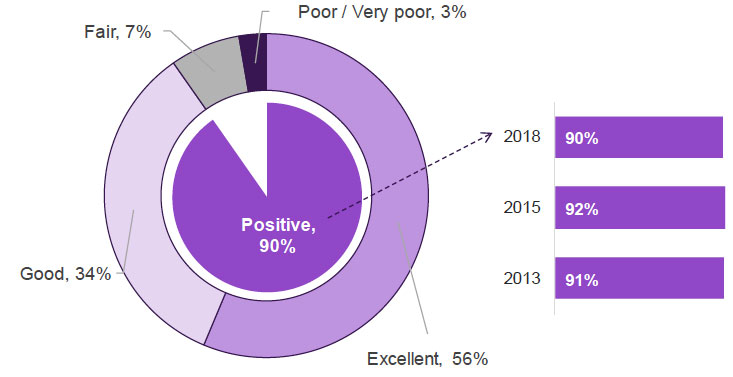
Antenatal Check-ups
The survey asked women, roughly how many weeks pregnant they were when they had their booking appointment. That is, the appointment where they were given their notes and / or were seen by a midwife. As shown in Figure 5.2, over four-fifths of women (83 per cent) had their booking appointment before they were twelve weeks pregnant.
Figure 5.2: Number of weeks pregnant at booking appointment
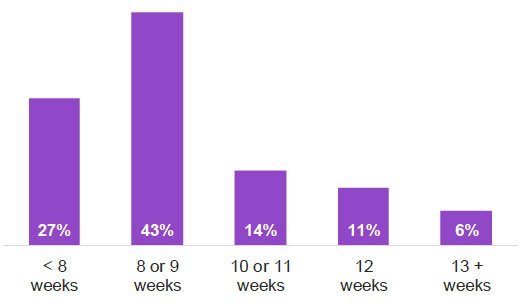
Thinking about their antenatal check-ups in general:
- Just over three-quarters of women (77 per cent) were not given a choice about where their antenatal check-ups would take place.
- Over three-fifths of women (63 per cent) reported that they saw the same midwife for all or most of their antenatal check-ups. As shown in Figure 5.3, this is a decrease from 67 per cent in the 2015 survey but is consistent with the results from the 2013 survey.
Figure 5.3: Percentage of women seeing the same midwife for all or most of their antenatal check-ups over time
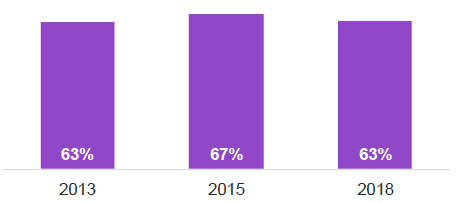
- Eighty-six per cent of women responded that they were always given enough time to ask questions or discuss their pregnancy. This is an increase from 82 per cent in both 2013 and 2015.
Information and Advice
Almost all women (97 per cent) were told who to contact if they needed further advice or support during their pregnancy. Of the women who had contacted a midwife or midwifery team, four in five (80 per cent) were given the help they needed which is consistent with previous surveys.
The survey asked whether respondents were given enough information by health professionals on a range of areas. As shown in Figure 5.4, women were most positive about information on options for feeding their baby and pain relief options for labour and birth, with two in three women (66 per cent) reporting that they were definitely given enough information on these areas.
Women were least positive about information on benefits and financial support, with 41 per cent responding that they did not get enough information but would have found this useful. However, it should be noted that this statement had a much higher proportion of women responding that they did not need this information and therefore being excluded from the analysis compared to the other statements.
Figure 5.4: Were you given enough information by health professionals on..? [16]
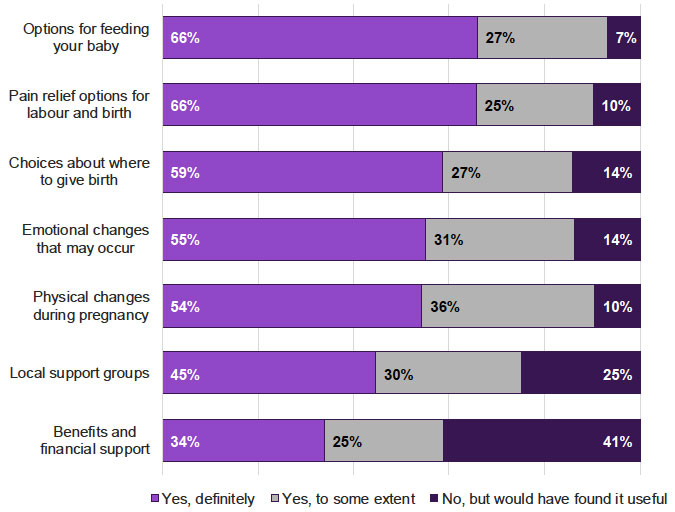
Most of these statements are new or have been substantially changed from previous surveys and so no comparisons to previous surveys are available. However, the statement on choices about where to give birth has a comparable question in previous surveys which show consistent results to those in Figure 5.4.
Over nine in ten women (93 per cent) were given the Ready, Steady, Baby book or a link to the website and found it useful. Five per cent of women did not find it useful and two per cent of women were not given the book or a link but would have liked it.
Person-centred Care
The survey asked women what choices they had been offered about where to give birth. Table 1 sets out the proportion of women being offered each choice. The most common choice reported was giving birth in hospital, which was offered to almost two-thirds of women (64 per cent). Sixteen per cent of women were not offered any choices about where to give birth.
Table 1: Choices about where to give birth[17]
| % |
|
|---|---|
| At hospital |
64 |
| At a midwife-led unit |
26 |
| At home |
28 |
| Not offered any choices |
16 |
| No choices due to medical reasons |
16 |
| Choices are limited in area |
4 |
When asked whether they agreed or disagreed with eight statements relating to person-centred behaviours they experienced during their antenatal care, women responded positively. As shown in Figure 5.5, six out of the eight statements were rated positively by at least nine in ten women.
The most positively rated statements were ‘I understood the information and explanations I was given’ and ‘I was treated with kindness and understanding’, which were rated positively by 96 and 94 per cent of women respectively.
The statements with the lowest positive responses were ‘My personal circumstances were taken into account’ and ‘Staff worked well together to organise my care’, however both these statements were still rated positively by 87 and 85 per cent of women respectively.
Figure 5.5: Responses to person-centred statements – Antenatal care
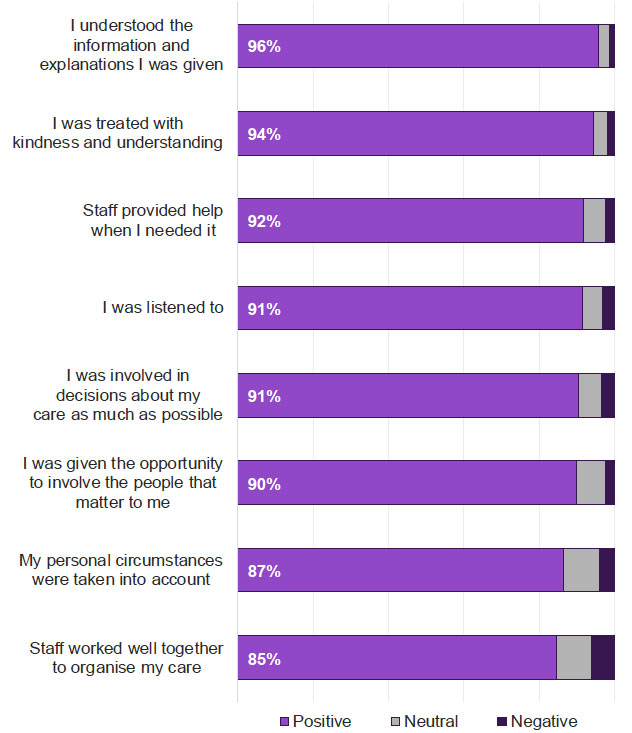
Contact
Email: patientexperience@gov.scot
There is a problem
Thanks for your feedback